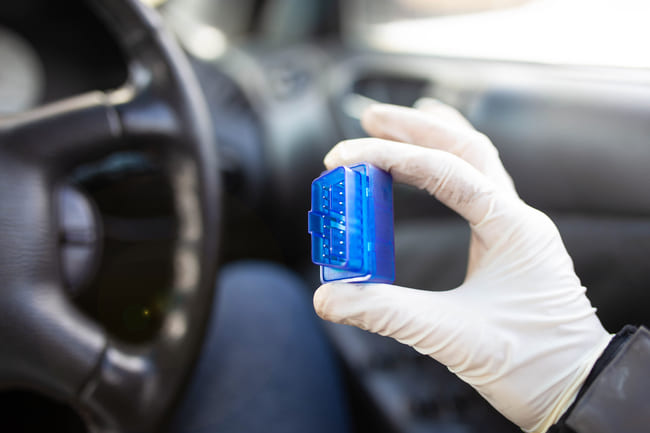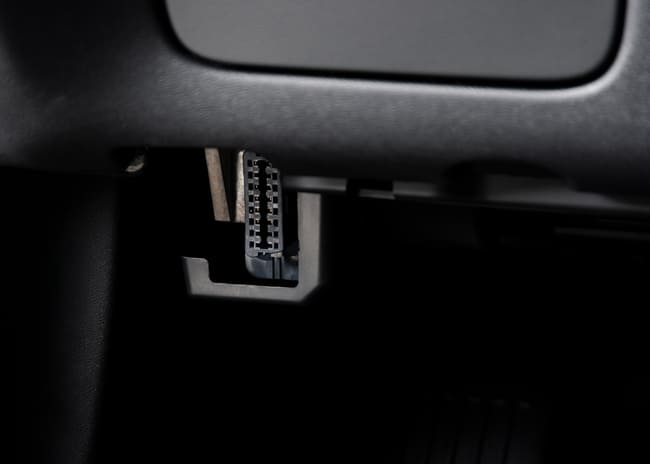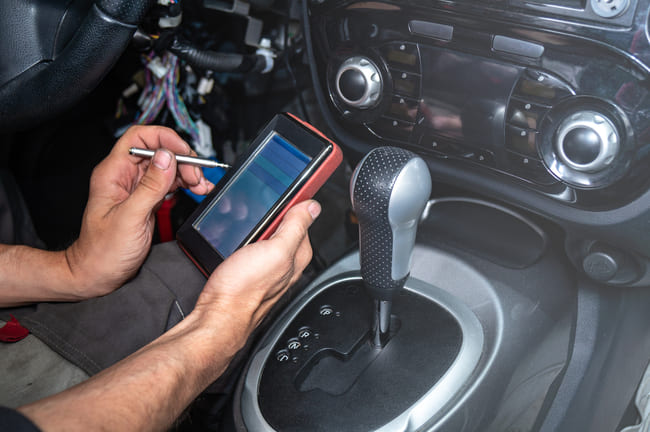
Who does not know it? You're on your way to vacation by car, you're looking forward to the exceptionally clear roads and to a few relaxing days or weeks and suddenly the check engine light flashes. Nothing is more annoying than starting the holiday with a visit to the workshop. It's a good thing that there are car diagnostic devices that you can use to read out the error memory in your car yourself, without necessarily having to drive to a workshop.
Contents
What does OBD2 mean?
OBD is the abbreviation of on-board diagnosis and refers to a diagnosis system integrated in the car. This system was originally introduced in 1988 in response to rising air pollution in California. It was not until 2001 that the second stage of development, OBD2 or EOBD, was introduced as a uniform system for fault detection with standardized interfaces and fault codes. This system has been mandatory for newly registered petrol vehicles since 2001 and for newly registered diesel vehicles in Europe since 2004.
OBD2 was developed, among other things, because it was observed that a car's emissions value deteriorated over time due to the wear and tear of emissions-relevant parts. Therefore, the exhaust gas value must be checked regularly, which today can only be done via the OBD2 interface. With the help of the OBD2, it is not only possible to control the emission-related electronic modules of cars from all manufacturers, but also to monitor all other electronic vehicle systems, such as airbags, rain sensors, belt systems, door locks or engine control lights. As a result, malfunctions can be detected and corrected at an early stage. However, whether all vehicle electronics systems can be monitored via OBD2 depends on the car brand, as the vehicle manufacturers can decide for themselves.
What can you read with OBD2?

The OBD2 monitors the control unit itself as well as the input and output signals and the communication between the individual control units, which means that errors and faults can be detected. In particular, all exhaust-relevant components of the vehicle are monitored and significant increases in emissions are recorded and reported. This makes it possible to guarantee permanently low exhaust emissions and to protect the components, for example in the event of misfires. As soon as an error occurs, the engine control light (MIL, Eng. Malfunction Indicator Light) lights up and the error is stored in the error memory of the control unit, where it is evaluated diagnostically. The stored information about the errors that have occurred can be read out just like real-time data and other information via the diagnostic interface of the car.
In addition to the emission-relevant systems, the electronic systems can also be monitored with the help of the OBD2. Which ones can be monitored on a specific vehicle depends on which systems the vehicle manufacturer wants to provide information about.
The following information can be made available via OBD2:
- Efficiency of the catalyst
- Function of the lambda probe
- Exhaust gas recirculation
- Speed in km/h
- Current speed limit
- < i class="as-icon as-icon--wrench"> Outside temperature in degrees Celsius
- Combustion values
- Secondary air system
- Fuel consumption in liters per 100 km
- Current location
- Voltage in volts
- Speed in revolutions per minute
- Tank ventilation system
- Engine load in percent
- Cooling water temperature in degrees Celsius
- Currently engaged gear
Which cars have an OBD2-interface?

An OBD2 interface is found on all petrol engine vehicles registered from 2001 and all diesel vehicles registered from 2004 onwards. However, there are a few exceptions that have introduced this diagnostic system earlier, for example Volkswagen in 1996. However, the interface for the OBD2 connector in the car is often difficult to find, as it is located in various places inside the vehicle behind covers can be installed hidden, but mostly under the ashtray or under the dashboard. However, this can usually be read quickly on the Internet for the respective vehicle type.
How does the error readout via an OBD2 connector work?

Basically, there are OBD2 connectors in different price categories with more or less functions. In the upper price range, data can not only be read but also written via the OBD2 interface. However, the latter should be left to the experts as a matter of urgency, since in the worst case the layman can paralyze the entire control unit with incorrect coding. To read an error, the car's ignition must be on, but it is not necessary to start the engine. The fault memory is then read out via the connector, whereupon one or more fault codes are output. However, these error codes are not always clear and the error reader can often only read standard codes and not manufacturer-specific values. These standard codes consist of one letter and four numbers.
The letter encodes the origin of the error:
- P for powertrain
- B for body
- C for chassis
- U for User Network
The four numbers provide information about the origin within the system coded by the letter, e.g. 1 for air-fuel metering control or 4 for additional emissions control, as well as the exact reason for the error.
For the OBD2 adapters, a distinction is also made between two different types, on the one hand they are available with the associated OBD2 diagnostic device and on the other hand in connection with an app for a smartphone or tablet.
In the first variant, the car diagnostic device displays the error code, but not in principle what this code means. This is especially the case with the cheap devices (available for 15 – 60 euros), for which you have to resort to extensive research on the Internet. In addition, the cheap devices often do not read the errors correctly, since a cheap Chinese copy of the “ELM327” chip is used for this, for which there is no suitable software. You have to spend about 80 – 120 euros for a good diagnostic device, depending on how in-depth the diagnosis should be. The more expensive car readers read the errors reliably and directly provide a good translation of the error code and sometimes even other useful information about the error and how to proceed. As soon as an error has been corrected, it is necessary to delete it using the diagnostic device so that the vehicle's internal electronics no longer flash and beep even though the error has been corrected or the damage repaired. With some systems, e.g. airbags, this is even absolutely necessary so that they work properly again.
In the second variant, the OBD2 adapter is connected to the smartphone or tablet via Wifi or Bluetooth. The error memory can then be read out via an app. Here, too, the reading depth depends heavily on the price category of the OBD2 connector. Cheap plugs often do not have their own app and use generic, free apps. However, the communication between the app and the plug often does not work smoothly because they are not tailored to each other. The more expensive adapters have their own app with a high reading depth and additional information about the errors, for which a subscription is often required.
Conclusion and a look into the future
If you want to save yourself the expensive and potentially unnecessary trip to a workshop, an OBD2 adapter is for you, as it can identify the exact cause of a flashing check engine light and the severity of the fault. Adapters from the more expensive price segment in particular are very helpful here, as they provide useful additional information about the errors. When choosing an adapter with an app, however, you should make sure that the data is protected and, if possible, only stored on servers in The United Kingdom. You should therefore pay particular attention to the “Made in The United Kingdom” quality mark. There are already rumors that the next stage of development, OBD3, is being researched. With OBD3, the errors will no longer just be stored, but automatically sent to the responsible authorities via satellite. This then monitors whether the error is corrected within a certain period of time, otherwise the vehicle owner will be fined. However, it is uncertain whether this technology will ever be ready for the market, since the developers have to deal with high costs, insufficient coverage and a major security risk right from the start.
